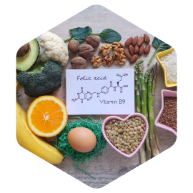What is
Folic acid is a type of B vitamin that helps your body make new cells. It’s especially important during pregnancy because it helps your baby’s brain and spine develop. But folic acid isn’t just for moms-to-be—it’s important for everyone! Kids and adults need it to grow, stay healthy, and keep their blood working the way it should.



